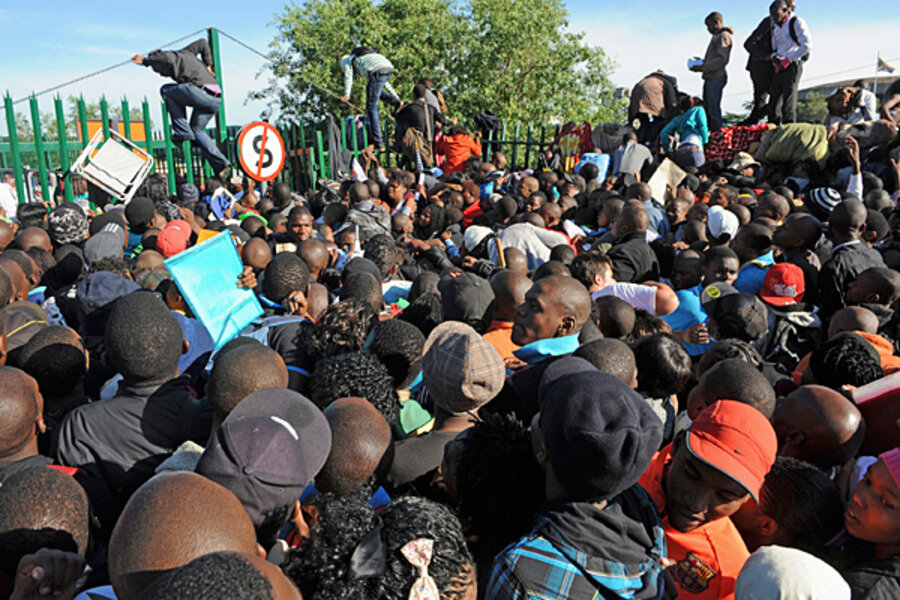Stampede at university highlights South Africa's education shortage
Loading...
When prospective university applicants stampeded the gates of the University of Johannesburg – killing one applicant’s mother and injuring dozens in the process – they sent a signal to the world about the lack of opportunity in South Africa’s higher education system.
The incident would have been horrifying under any circumstances, but coming as it did during the 100-year anniversary celebrations of the ruling African National Congress, it showed that higher education remains a very limited prospect for young South Africans, and one for which people will go to desperate lengths to achieve.
Nearly 11,000 applicants showed up to vie for 800 spots available at the University of Johannesburg. Some had camped out in line since 1 a.m. to ensure that their applications would be received – the mail isn't very reliable and few have access to the Internet. And when the gates opened at 7:30 a.m. on Tuesday, policemen and university officials were unable to safely control the flow of students attempting to get their applications in first.
University of Johannesburg Vice Chancellor Ihron Rensburg told reporters that the university had decided to reopen the application process for a day in order to ensure black students had access to higher education. But the crowd control system failed.
"When we opened the gates this morning, we had this unfortunate, this very sad situation, where there was simply an unbearable crush on the front entrance, or front gate," Mr. Rensburg told a news conference.
In a country with high unemployment – officially 25 percent, but up to 50 percent for youths – and a public education system that systematically fails to produce literate, skilled citizens – its schools are ranked 139 in the world in literacy – it’s easy to see why young South Africans would be so desperate to get into a university.
Even those who support the African National Congress government say that more needs to be done to increase higher-education opportunities, and to level the playing field for a black majority population that has seen little material change in their lives in the 18 years since the end of apartheid.
In total, South Africa's universities have an estimated 150,000 seats; but 330,000 prospective students have already applied. Less prestigious vocational schools, meanwhile, have seats that go unfilled.
The Congress of South African Trades Unions (COSATU) reminded the ANC government of its pledges in its own Freedom Charter that “higher education and technical training shall be opened to all by means of state allowances and scholarships awarded on the basis of merit.”
“COSATU appreciates the excellent work being done by the Minister for Higher Education and Training, Comrade Blade Nzimande, to expand and improve higher and further education, but urges the government to do even more, in line with its policy priorities, to open the doors of learning to all South Africans…”
South Africa is not the only emerging economic power with an access-to-higher-education problem. India has one of the world’s most prestigious university systems in the world. Some applicants place Harvard, Yale, and MIT as their second choice, if they fail to get entry into one of the country’s Indian Institutes of Technology. But each year, Indian students commit suicide if they fail to score high enough on the entrance exams to get in.
In January 2011, when the University of Johannesburg suffered a less violent but still chaotic late-application period, Higher Education Minister Nzimande had joked with a reporter that this was a “wonderful problem” to have, with so many qualified students seeking entry into university.
Today he said that the university would move to a “central application process,” and move away from taking late applications.
“We are considering discontinuing walk-ins at registration time at universities,” Nzimande was quoted by the Mail and Guardian newspaper as saying.





